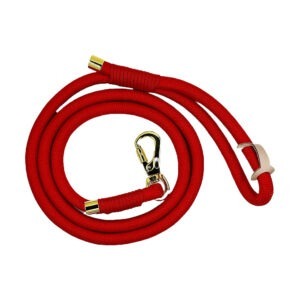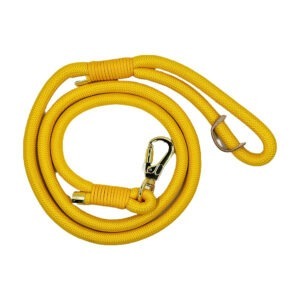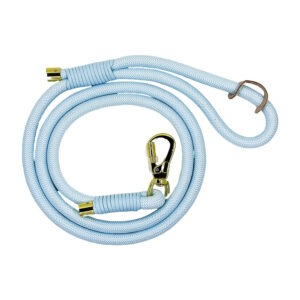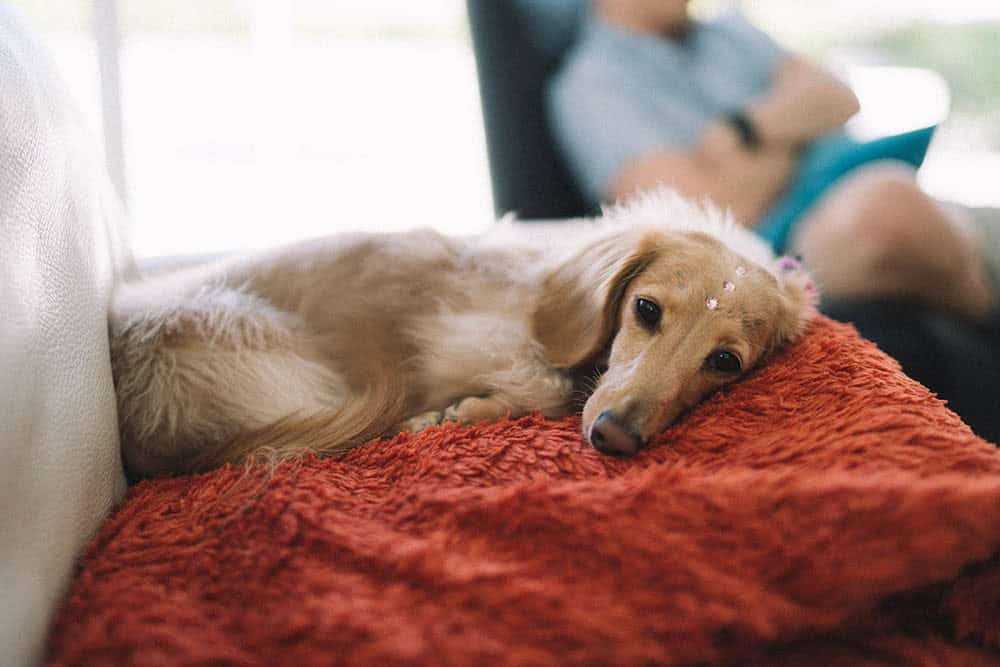Introdução
Anxiety and reactivity are common issues that many dog owners encounter, whether it’s from fireworks, strangers, or separation from loved ones. Dogs, like humans, experience stress and fear, which can manifest through destructive behaviors or hyperactivity if left unaddressed. Helping an anxious or reactive dog takes patience, consistency, and the right approach. In this article, we’ll explore calming techniques that go beyond the basics to give you actionable strategies for making your dog feel more secure and relaxed.
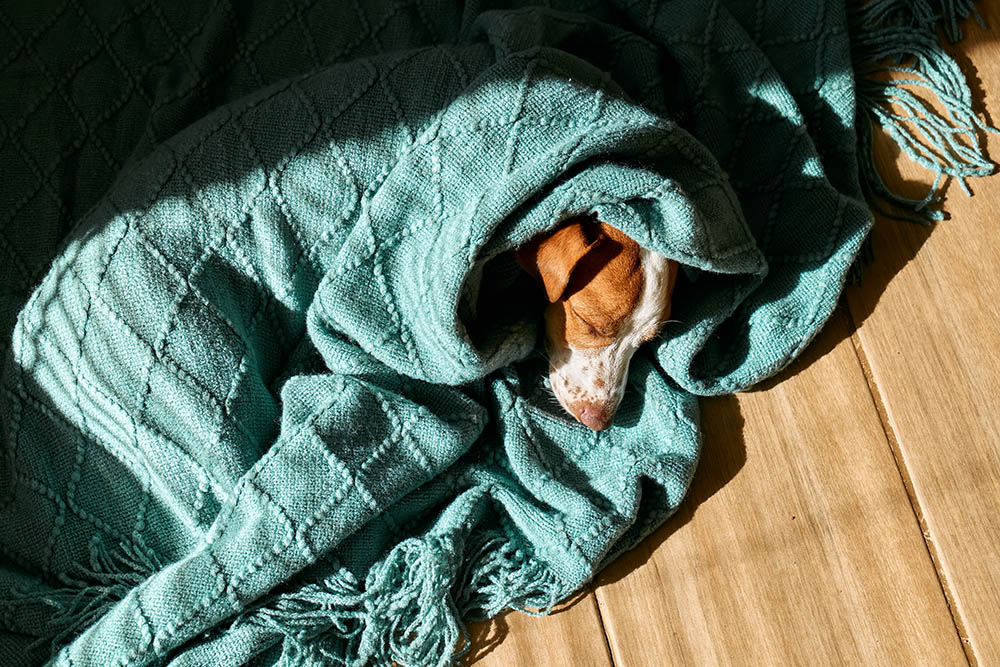
Understanding Canine Anxiety and Reactivity
Anxiety and reactivity are often confused, but they refer to different behaviors. Anxiety stems from fear or stress, usually triggered by unfamiliar stimuli or separation from the owner. Reactivity, on the other hand, refers to heightened responses—such as barking, lunging, or growling—toward specific triggers like other dogs or people. Addressing these behaviors early prevents them from escalating into long-term issues and strengthens the bond between you and your dog.
Common Triggers for Anxiety and Reactivity
Dogs can become anxious or reactive due to various triggers, including:
Some of our latest products...
-
-
-
-
Bandanas de cachorro
Liverpool FC Dog Bandana
$ 13.19 – $ 16.12 USD Ver opções Este produto tem várias variantes. As opções podem ser escolhidas na página do produto
- Environmental Triggers: Thunderstorms, fireworks, or loud noises.
- Social Triggers: Meeting new people or other animals, or being left alone.
- Routine Changes: Moving to a new home or changes in the household environment.
- Medical Causes: Illness, pain, or sensory impairments.
Sometimes anxiety or reactivity develops when a dog lacks structure and clear routines. A sudden change in the household, like a new pet or schedule, can increase stress levels, leading to behavioral issues.
Creating a Safe Space for Your Dog
Having a designated safe space can give your dog a sense of security when they feel overwhelmed. This area should be quiet, comfortable, and free from stress triggers. Consider adding:
- Comforting Items: A cozy bed or weighted blanket to provide a calming effect.
- Soothing Sounds: White noise machines or classical music designed for dogs.
- Interactive Toys: Lick mats or chew toys for self-soothing behaviors.
Creating a safe space helps your dog feel more in control, giving them the option to retreat when they feel stressed.
Techniques to Manage Anxiety and Reactivity
There are several proven methods to help calm anxious or reactive dogs. These include behavior modification techniques and redirection strategies.
1. Counter-Conditioning
Counter-conditioning helps change your dog’s emotional response to a trigger. For example, if your dog is afraid of the doorbell, give them a treat every time it rings. Over time, the doorbell becomes associated with something positive, reducing fear.
2. Treinamento de dessensibilização
This technique involves gradually exposing your dog to triggers in a controlled way. For instance, if your dog is afraid of thunderstorms, play a thunderstorm sound at a low volume and reward them for remaining calm. Increase the volume gradually over time.
3. Redirection
When your dog becomes anxious or reactive, redirect their attention to a toy, command, or game. For example, teach them to focus on you with a “watch me” command when they encounter a trigger.
Incorporating regular physical exercise and mental activities, such as puzzle toys or nose work, can also reduce your dog’s overall stress levels.
Calming Products for Anxious Dogs
Several products on the market can support your dog’s emotional well-being:
- Calming Collars and Sprays: These release pheromones that mimic a mother dog’s scent, helping to reduce stress.
- Anxiety Wraps (like Thundershirts): Gentle pressure from these wraps can have a calming effect.
- Natural Supplements: Chews or tablets containing ingredients like chamomile, melatonin, or L-theanine can help dogs stay calm.
Rotate these products periodically to maintain their effectiveness and prevent your dog from becoming desensitized to them.
The Role of Routine in Reducing Anxiety
Dogs thrive on routine because it helps them understand what to expect each day. A stable routine reduces separation anxiety and other stress-related behaviors. Establish consistent times for:
- Feeding and walks
- Playtime and training
- Rest and quiet time
You can also create a pre-departure routine to desensitize your dog to leaving cues. For example, put on your shoes or grab your keys several times a day without leaving to break the association with separation.

Quando procurar ajuda profissional
If your dog’s anxiety or reactivity persists despite your efforts, it may be time to seek professional help. Options include:
- Behaviorists and Trainers: These professionals can develop a tailored plan to address your dog’s needs.
- Veterinary Intervention: Your veterinarian can evaluate your dog for underlying medical conditions or prescribe medication if necessary.
Professional help ensures your dog gets the support they need, especially if the anxiety is severe or related to trauma.
Your Behavior Matters: Stay Calm and Positive
Dogs are highly attuned to their owners’ emotions. If you react with frustration or anger when your dog exhibits anxious behavior, it can make the problem worse. Instead:
- Use a calm, steady voice to reassure your dog.
- Avoid punishing reactive behavior—this can escalate anxiety.
- Reward calm behavior with treats and praise to reinforce positive responses.
Remaining calm in stressful situations helps your dog feel more secure and confident.
Monitoring Progress and Adjusting Techniques
Tracking your dog’s progress will help you understand what techniques work best. Look for signs of improvement, such as:
- Reduced barking or growling
- Less destructive behavior
- Calmer responses to previously stressful situations
Adjust your approach as needed and celebrate small wins along the way.
Conclusion: Helping Your Dog Feel Safe and Calm
Helping an anxious or reactive dog requires time, consistency, and patience. By understanding your dog’s triggers, creating a safe space, and using calming techniques, you can reduce anxiety and reactivity. Remember to monitor your dog’s progress and seek professional help if needed. With the right strategies, your dog can learn to feel more comfortable and secure in any situation.
What techniques have worked for your anxious or reactive dog? Share your story with us—we’d love to hear from you!
FAQs: Calming Techniques for Anxious or Reactive Dogs
1. How long does it take to see results from calming techniques?
It varies based on the dog and the severity of their anxiety. Some dogs show improvement within a few weeks, while others may take months to respond to behavior modification and calming products.
2. Can I use calming supplements and anxiety wraps together?
Yes, calming supplements and anxiety wraps can be used together for added support. However, consult with your vet before starting supplements to ensure they’re safe for your dog.
3. What should I do if my dog’s anxiety gets worse?
If your dog’s anxiety worsens, stop any new techniques or products you’ve introduced and consult with a veterinarian or professional trainer to reassess the situation.
4. How do I know if my dog’s anxiety is medical or behavioral?
If your dog’s behavior changes suddenly or they show signs of pain, consult your veterinarian to rule out medical causes. If no physical issues are found, the anxiety is likely behavioral.
5. Can routine changes trigger anxiety in dogs?
Yes, changes in routines—such as moving, changes in household dynamics, or schedule adjustments—can cause anxiety. Maintaining consistency where possible can help ease the transition.

